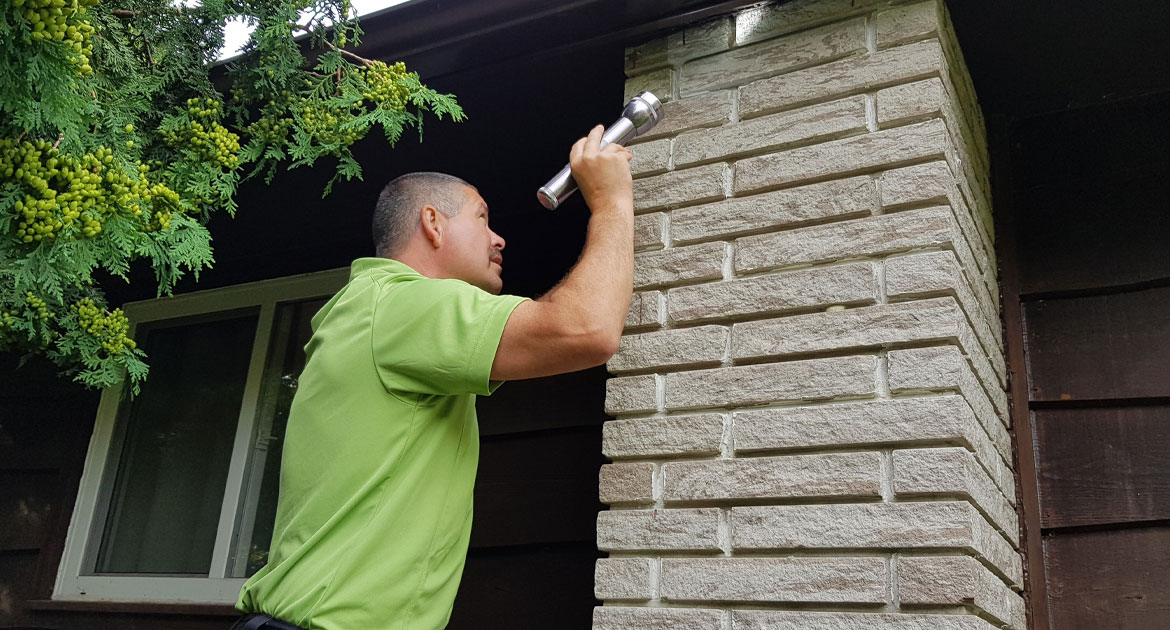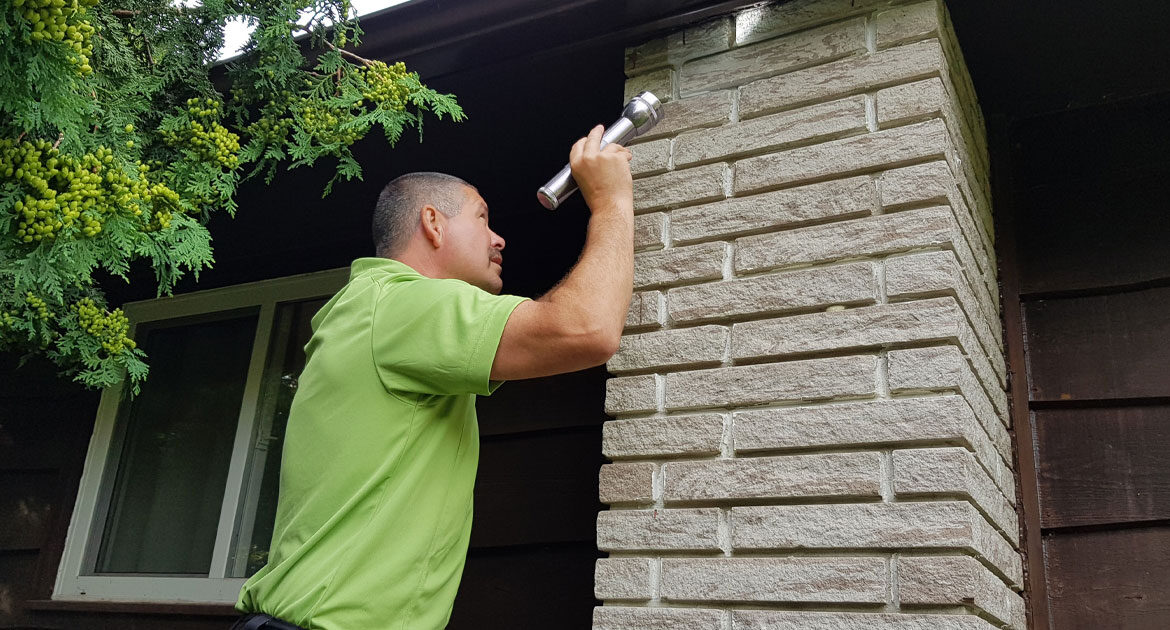Bats are flying creatures. They aren’t built for walking, and they can’t take off from the ground. Therefore, if they get into your home, it was probably from an entry point high up. Bats can squeeze into very small openings. They can fit through a gap the width of a dime, so even if there are no large, gaping holes in your home’s exterior, you may still have occasion to call for wildlife control in Newmarket because of bats. Here are some common ways that bats may get into your home.
1. Chimney
Bats typically do not roost in large, open spaces. They prefer spaces that are smaller and more closed in. These spaces help retain heat better and provide protection from predators that may be too large to squeeze into confined spaces. Your chimney meets all these criteria, so it is no wonder that chimneys are a frequent way that bats get into homes.
Bats may get into the chimney of your home whether or not you use your fireplace. They can cause problems either way, but the situation can be a little more serious if your chimney is still open to the rest of the house rather than closed off. If there is a bat in your chimney and the flue is open, the bat may get confused and descend into your living space. Even if the bat stays in the chimney, its excrement may drip down into your fireplace. Bat urine and feces contain pathogens that can cause illness in human beings.
Chimney caps are covers that allow smoke and exhaust to get out while preventing bats and other animals from getting in. It is a good idea to install a chimney cap even if your fireplace is blocked off.
2. Vents
Not all homes have chimneys but all buildings — new and old, residential and commercial — have vents. These are an important part of your HVAC system; they allow fresh air to come in while releasing carbon monoxide and other poisonous gases. Unfortunately, they can also attract bats for much the same reason that chimneys do: They provide shelter, warmth, and protection from predators. If a bat gets into a roof vent, it can create a hazard by blocking it off.
Vent covers are like chimney caps in that they are made of sturdy mesh to allow the vents to function as intended while keeping animals out. When you bought your home, it probably had vent covers already in place. Nevertheless, you shouldn’t take them for granted. Rather, you should check them every few years to see if they need to be replaced.
3. Roof Damage
You know that bats can get into your attic through holes that are supposed to be there, such as chimneys and vents. They can also get in through holes that are not supposed to be there. If there is damage to your roof, if shingles are missing, cracked, peeling, or otherwise damaged, they can cause tiny holes in your roof that bats may be able to fit through. Even if there isn’t an opening per se, the wood underneath may be sufficiently rotted that the bats can push through. For this reason, it is important to inspect your roof regularly to look for signs of damage to the shingles as well as to the vent covers.
What Is Involved in Wildlife Control in Newmarket From Skedaddle?
Our methods remove wild animals from your home humanely. This is particularly important in the case of bats because many species are endangered. Laws in place to protect bats make it illegal to harm them. Once the bats have been removed, we also identify potential entry points and seal them off so they can’t get back in. Think Skedaddle when asking yourself, “Where can I hire bat removal near me?”




